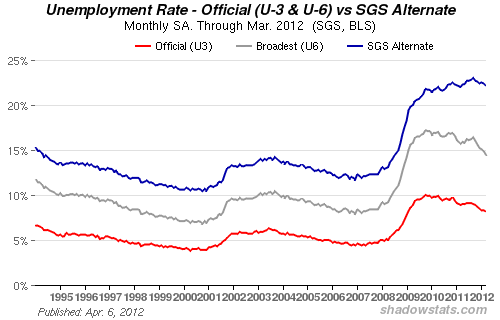Part I: Introduction
This post, in five parts, will discuss the unemployment situation in the United States.
As a prelude, I am of the strong belief that the unemployment situation – and its underlying drivers has, and will, impact the entire U.S. population, not just those unemployed. This impact will be experienced through an adverse combination of individual-specific factors including reduced employment prospects, reduced career advancement probabilities, and reduced compensation and benefits – not to mention an array of adverse macroeconomic factors that have, and will, impact the country’s economic situation as a whole.
A few disclaimers with regard to this post:
First, this unemployment aspect of our current economic situation is very complex. This series of posts will present a summary discussion of the topic, as to avoid excessive complexity and length.
Second, the current and future unemployment situation varies widely among demographics, industries, and professions. As such, while every employment situation is unique, there is enough commonality as to be able to generalize to some extent.
Third, the overall employment situation is, of course, dependent upon the overall economic environment.
Fourth, a precursor to this series of blog posts is the July 2009 series of five blog posts titled “Why Aren’t Companies Hiring?”, which discusses various aspects of the topic, many of which lack recognition.
Part 2: What Is The Actual Unemployment Rate?
As this post is written, the official Unemployment Rate (U-3) is at 8.2%.
Some believe that the U-6 rate, currently at 14.5%, is a (closer) proxy of the actual unemployment rate.
Of course, there are other interpretations of the actual unemployment rate. One is seen on the ShadowStats.com site’s Alternate Unemployment Charts page. On this page, there is an interesting chart of what John Williams refers to as the “Alternate Unemployment Rate,” which he defines as:
The seasonally-adjusted SGS Alternate Unemployment Rate reflects current unemployment reporting methodology adjusted for SGS-estimated long-term discouraged workers, who were defined out of official existence in 1994. That estimate is added to the BLS estimate of U-6 unemployment, which includes short-term discouraged workers.
The U-3 unemployment rate is the monthly headline number. The U-6 unemployment rate is the Bureau of Labor Statistics’ (BLS) broadest unemployment measure, including short-term discouraged and other marginally-attached workers as well as those forced to work part-time because they cannot find full-time employment.
Here is the accompanying chart, indicating the U-3, U-6 and his “SGS Alternate Unemployment Rate.” One sees that there is a different trajectory for the SGS Alternate rate, currently at 22.2%, vs. the official U-3 and U-6 rates:
I like to use these three unemployment rates – the U3, U6, and SGS Alternate Unemployment Rate – as benchmarks; they also serve to (disconcertingly) illustrate how one concept, that of the unemployment rate, can have three vastly different values.
As to my belief of the actual unemployment rate, I think that the answer is conditional on many different factors, including – most importantly – how one chooses to define an “unemployed person.” As well, I don’t believe that the framework and methodologies currently used to calculate the official unemployment rate are optimal.
Given my misgivings with the framework and methodologies currently utilized, I find it nebulous as to what exactly the actual unemployment rate may be. However, from an “all things considered” standpoint, taking into account my definition of an “unemployed person”, the official unemployment statistics, an array of arguments supporting and refuting the validity of the official unemployment statistics, empirical data, etc., I surmise that the “actual” unemployment rate may well be above 20%, as suggested by the SGS Alternate Unemployment Rate. Of course, if this is actually the case, it would be highly worrisome on a variety of fronts, and have vast implications.
